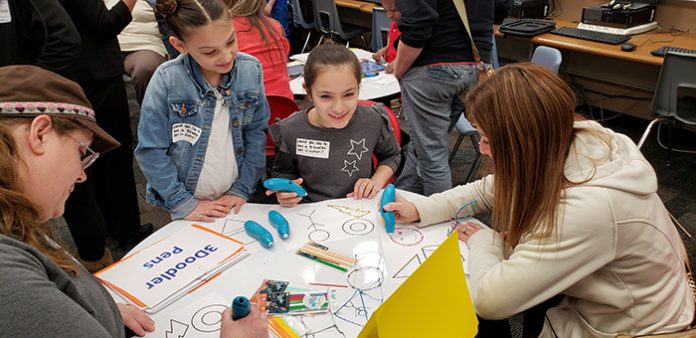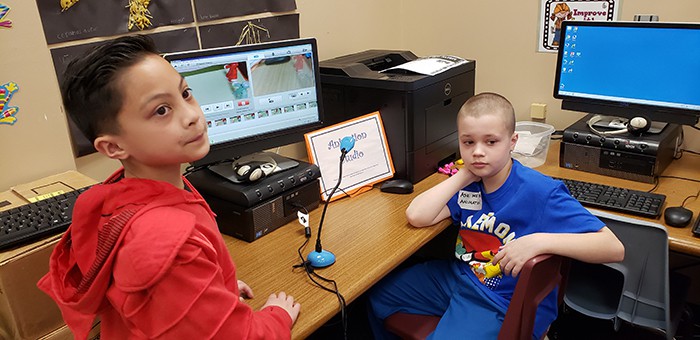
MANCHESTER – The STEM lab has grown in recent years to STEAM – Science, Technology, Engineering, Art, and Math – while continuing to enrich students’ school experiences.
Manchester Township Elementary School recently opened its own STEAM lab. A $15,000 grant from the district’s educational association funded the project. The lab occupies the space where the former computer lab was housed.
Students and staff treated parents to a demonstration of the lab recently.
“Students demonstrated coding systems, robots, animation, contraptions, circuitry, 3-D Doodle pens and various building systems like Legos, magnetic blocks, Zoob and Keva planks. Visitors were impressed not only by the amazing equipment but also by the students, who were courteous, professional and highly knowledgeable,” district spokeswoman Lee Bruzaitis told The Manchester Times.

“For years we have been working to create a STEAM Lab, writing grants and collecting materials to accomplish this task. We recognized the importance of the implementation of 21st Century Skills with focus on Science, Technology, Engineering, Math and the Arts for all our students,” MTES Principal Linda Waldron said. “[Carolanne] Weinberger (Our Technology and Gifted and Talented teacher) and [Laura] Henry (Media Specialist) collaborated to create a learning environment that fit the needs of our MTES students. The MTEF graciously granted us $15,000 last June and we collaborated with Ridgeway who were recipients the previous year, and met with the superintendent to see what would best benefit the MTES community.”
Waldron said classroom teachers use the lab weekly with Weinberger, who starts each lesson in Google Classroom. The teachers and students are guided, as needed, by Weinberger to use the materials for the lesson.

“These kids are ready for this shift in learning and it is my job to expose them to all that is out there. I am excited to be spearheading this initiative and honestly in all my 27 years, I have never seen this much excitement from the students or staff,” Weinberger said.
Henry has been using the lab to teach students chess. She’ll use giant chess and checkers pieces outside during recess to continue teaching the students, Waldron said.
“We are developing critical thinking skills in all our students and in all areas opening their eyes to possibilities for the future that they didn’t realize existed before. They are exposed to future careers at a very age, and excited about the possibilities that lie ahead,” Waldron said.
She used the example of a recent visit to fourth- and fifth-graders from Kevin Kunzman, a digital animator from ABC News. He showed students their love of video games and animation they learned in the STEAM lab could translate into future careers.

“The lab has a lot of different stuff, fun stuff that helps you learn. We just learned how to program and it’s important to me because I want to be a fashion designer when I grow up. You need to know how the pieces fit together and maybe a program designed to do that would help me,” Lauren, a second grader, said.
“Excitement is building and staff are happy to be part of this change. They are digging in and working collaboratively to see how they can access materials, bring it into the classroom and make learning more meaningful to our students. Parent excitement was off the charts. So much good feedback. Over 100 parents attended and were actively engaged in all the demonstrations on our Open House Day,” Waldron said.

STEM labs have been all the rage in education for years. The programs focused on Science, Technology, Engineering and Math, areas where employers often struggle to find talent. But the programs didn’t show students how to employ creation and ingenuity, according to the writers at EducationCloset.com.
“STEAM is a way to take the benefits of STEM and complete the package by integrating these principles in and through the arts. STEAM takes STEM to the next level: it allows students to connect their learning in these critical areas together with arts practices, elements, design principles, and standards to provide the whole pallet of learning at their disposal. STEAM removes limitations and replaces them with wonder, critique, inquiry, and innovation,” EducationCloset.com writers said.






